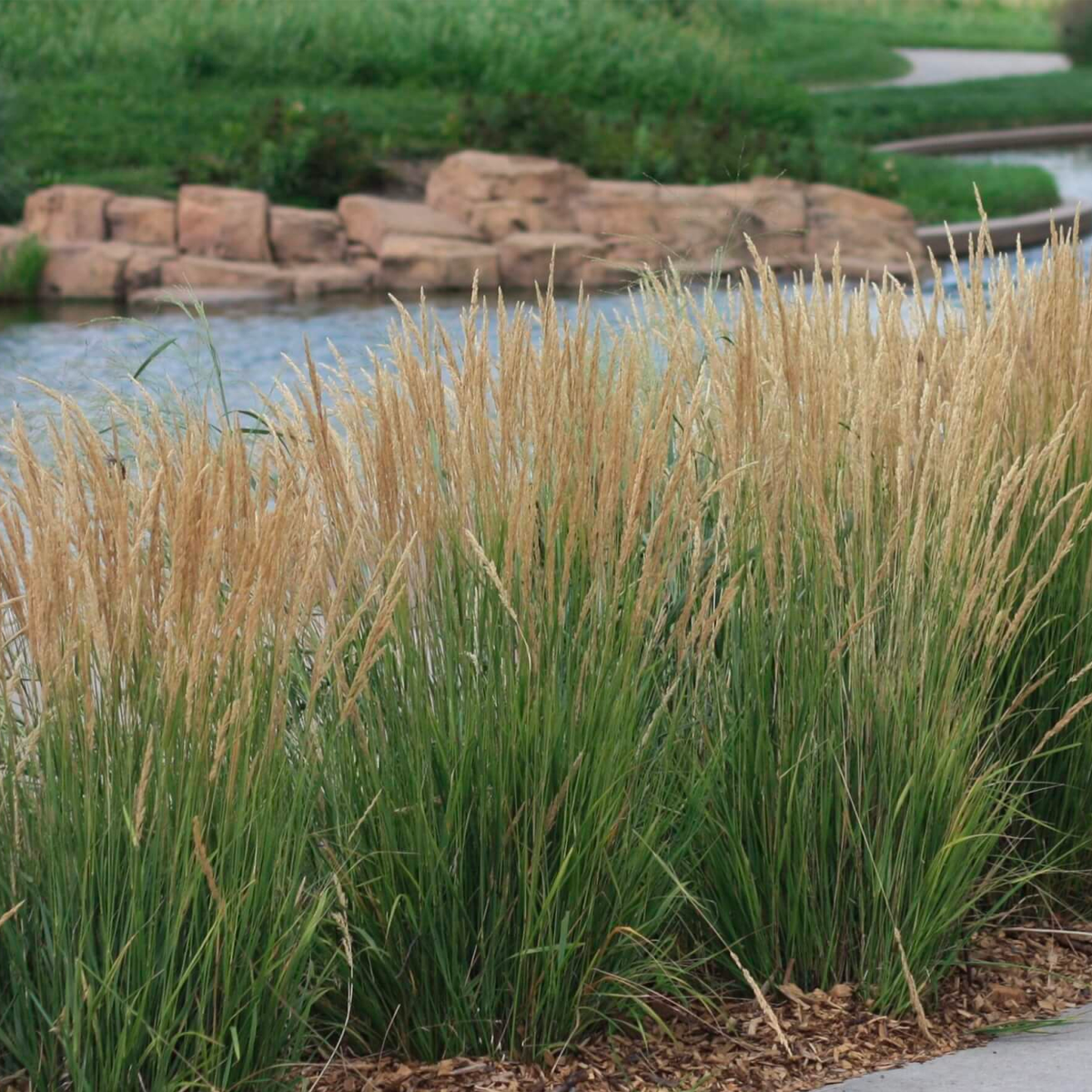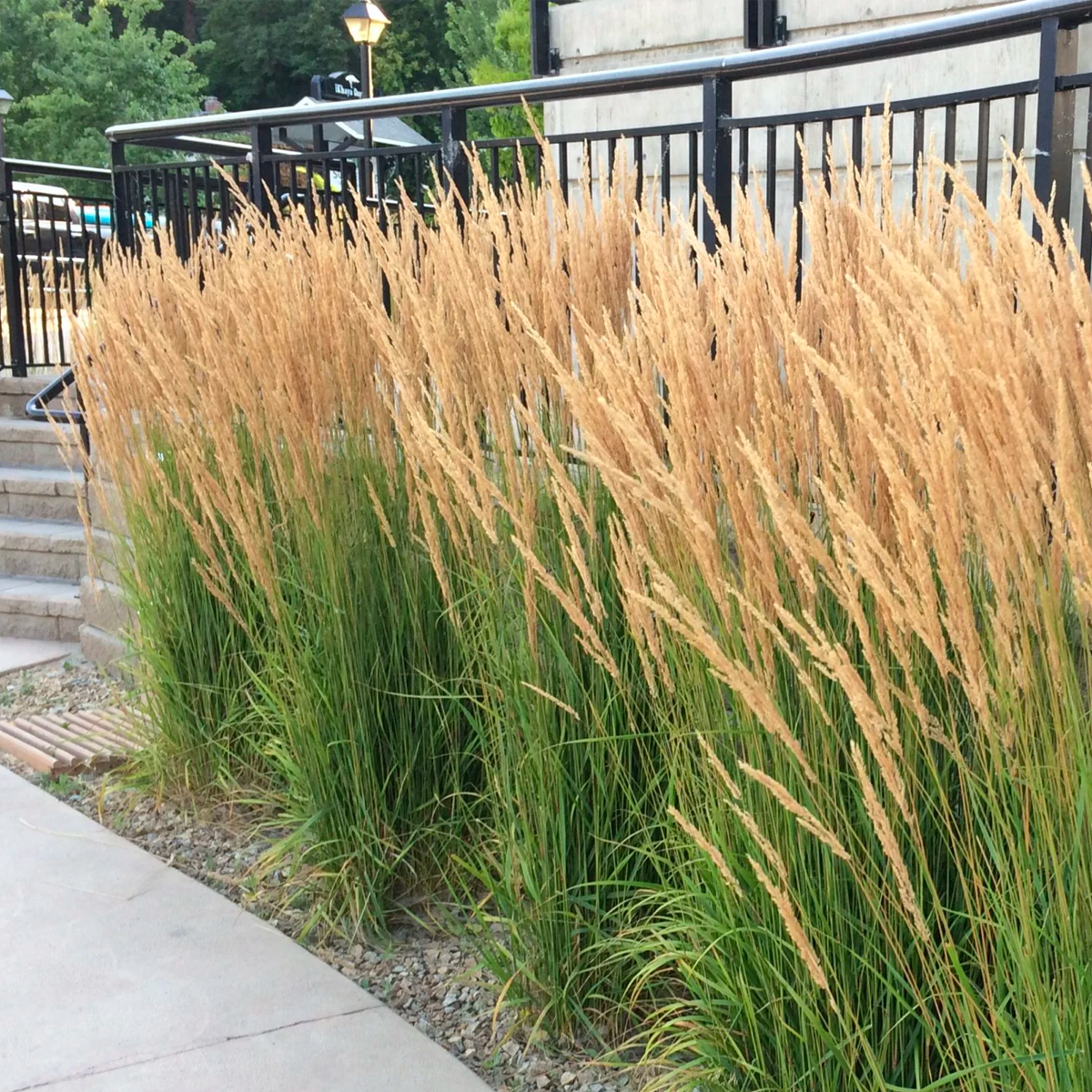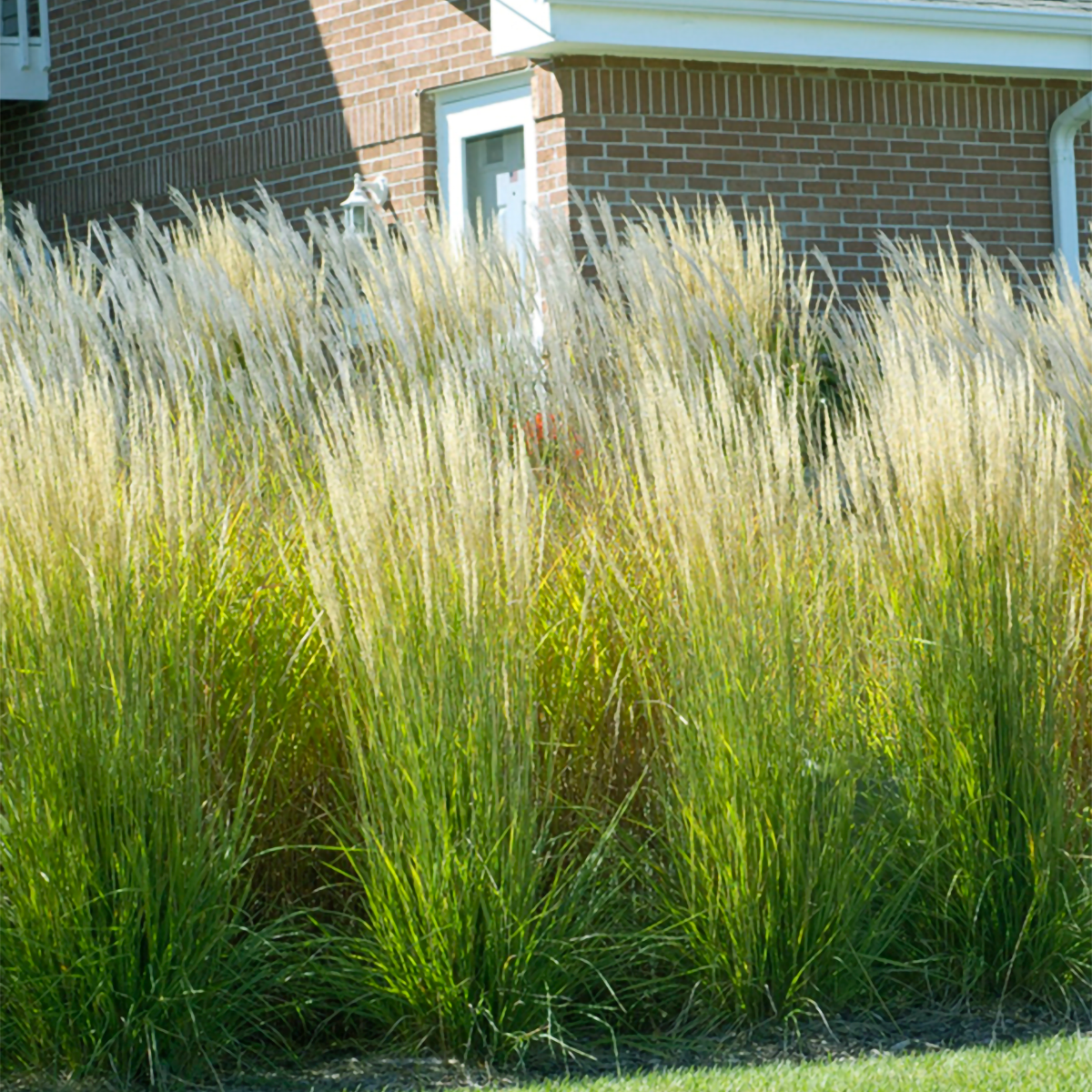Genus name comes from the Greek words kalamos meaning reed and agrostis meaning a type of grass.
The hybrid name acutiflora comes from the Latin words acutus meaning «sharp-pointed» and flora which honors Flora, Roman goddess of flowering plants.
Easily grown in average, medium to wet soils in full sun. Blooms well in light shade, and actually appreciates some part afternoon shade in hot summer climates such as the St. Louis area, but generally tends to produce fewer flowers and develop floppier foliage as the amount of shade increases. Prefers rich, consistently moist soils that do not dry out. Reportedly does well in heavy clay soils, unlike many other kinds of ornamental grasses. Cut clumps to the ground in late winter just before the new spring shoots appear.
Calamagrostis, commonly known as reed grass, is a genus consisting of about 250 species of cool season grasses which are primarily native to moist to wet areas in temperate regions of the northern hemisphere. These grasses typically form large, dense, erect clumps of narrow, flattened, green leaves from which rise stiffly upright flowering stalks in summer bearing narrow flower plumes followed by often persistent seeds.
C. × acutifolia, commonly known as feather reed grass, is a hybrid resulting from a cross between two species native to Europe and Asia, namely C. arundinacea and C. epigejos. This hybrid occurs naturally, but somewhat infrequently, in Europe. Clumps of narrow leaves to 18-36” tall are dwarfed by flower stems which rise to 5’ tall in summer bearing feathery flower spikes. Flowers are followed by golden seeds which mature to tan. Seeds often persist into winter. Seeds are sterile.
The hybrid name acutiflora comes from the Latin words acutus meaning «sharp-pointed» and flora which honors Flora, Roman goddess of flowering plants.
‘Karl Foerster’ is the most popular of the hybrid feather reed grasses sold in commerce today. It is noted for its narrow-vertical growth of bright green leaves to 3’ tall and 2’ wide and feathery plumes of summer-blooming pink to purple tinged flowers on narrow upright stalks rising well above the foliage to 5’ tall. 2001 Perennial Plant of the Year Award.




